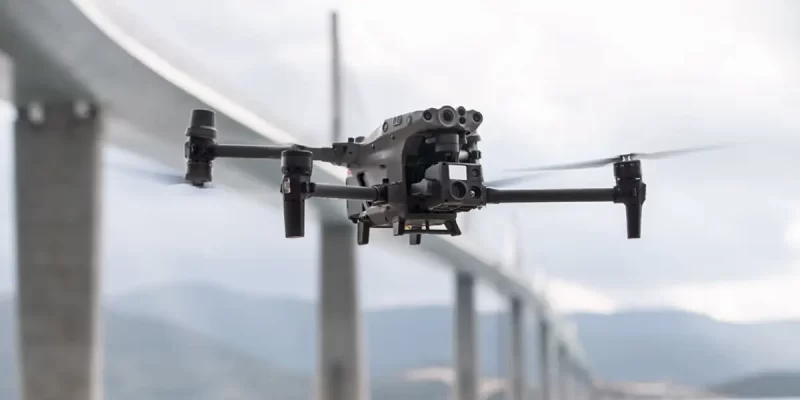The drone industry is experiencing rapid advancements in 2025, with innovations transforming their capabilities across various sectors. From enhanced autonomy to integration in extreme environments, drones are becoming more versatile and indispensable. Here’s an in-depth look at the top drone innovations making waves this year.
AI-Powered Autonomous Swarms
Artificial Intelligence (AI) is revolutionising drone operations, enabling fleets to operate collaboratively without central control. Inspired by natural phenomena like bird flocks, these swarms can perform complex tasks such as surveillance, search and rescue, and environmental monitoring. For instance, researchers have developed drone swarms capable of real-time collision avoidance and trajectory planning, mimicking animal movements. This technology allows for efficient area coverage and adaptability in dynamic environments.
Arctic-Ready Drones
Operating drones in extreme conditions like the Arctic presents unique challenges. NATO countries are racing to develop drones capable of withstanding sub-zero temperatures and unreliable GPS connectivity. These Arctic-ready drones are essential for surveillance and operations in increasingly contested polar regions. Innovations focus on enhancing battery performance in cold climates and ensuring reliable communication systems despite harsh weather conditions.
Supersonic Drone Technology
The pursuit of speed has led to the development of supersonic drones. China’s unveiling of the “Monkey King” drone, capable of potentially carrying passengers at Mach 4, exemplifies this trend. Utilizing advanced propulsion systems, such drones aim to revolutionise rapid transportation and strategic military operations. Test flights are scheduled, with aspirations for commercial deployment in the near future.
AI-Driven Target Tracking
Advancements in AI are enhancing drones’ ability to autonomously track moving targets. Platforms like Palladyne AI’s Pilot AI demonstrate capabilities where drones can navigate while identifying and prioritising targets. This technology is pivotal for applications in surveillance, search and rescue, and dynamic filming, allowing drones to adapt to changing scenarios without human intervention.
Integration into Shared Airspace
As drone usage becomes more widespread, integrating them safely into shared airspace is crucial. The industry is progressing towards implementing Unmanned Traffic Management (UTM) systems, facilitating seamless coordination between drones and manned aircraft. These frameworks aim to enhance safety, automation, and interoperability, ensuring drones can operate efficiently without disrupting existing air traffic.
Enhanced Military Capabilities
Military drone technology is advancing rapidly. The UK’s introduction of StormShroud drones, designed to jam enemy air defences and protect RAF jets, showcases the integration of AI and electronic warfare capabilities. Similarly, Turkey’s development of the Anka-3 stealth UAV, capable of being controlled by another aircraft in a loyal wingman role, highlights the trend towards more autonomous and versatile military drones.
Agricultural Applications
Drones are becoming integral to modern agriculture, offering solutions for crop monitoring, spraying, and data collection. Innovations like Rotor Technologies’ Sprayhawk, a semi-autonomous helicopter designed for agricultural tasks, exemplify this trend. Equipped with advanced navigation systems and substantial payload capacities, such drones enhance efficiency and reduce the need for manual labour in farming operations.
Counter-Drone Technologies
With the proliferation of drones, counter-drone technologies are essential for security. Systems are being developed to detect, track, and neutralise unauthorized drones, protecting sensitive areas and events. These technologies employ methods like signal jamming, net capture, and directed energy to mitigate potential threats posed by rogue drones.
Environmental Monitoring and Disaster Response
Drones are increasingly utilised for environmental monitoring and disaster response. Equipped with sensors and cameras, they can assess damage, locate survivors, and deliver supplies in areas inaccessible to ground teams. Their rapid deployment and real-time data transmission capabilities make them invaluable tools in emergency situations.
Urban Air Mobility (UAM)
The concept of Urban Air Mobility is gaining traction, with drones envisioned as a solution for urban transportation challenges. Companies are developing passenger drones and air taxis, aiming to alleviate traffic congestion and provide efficient short-distance travel. Regulatory frameworks and infrastructure development are key focus areas to facilitate the integration of UAM into cityscapes.

Comments